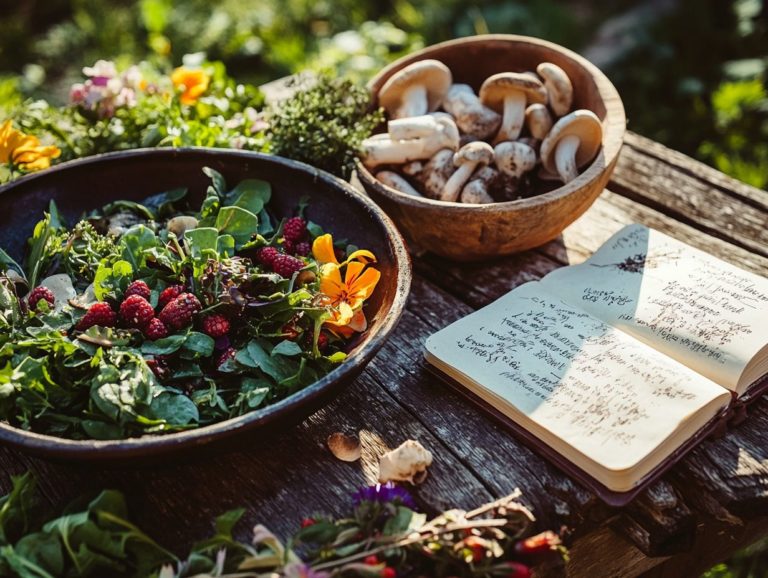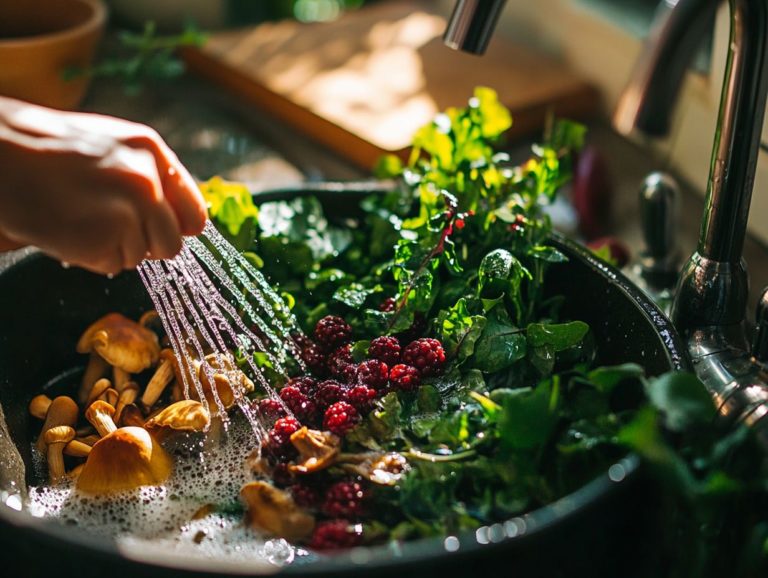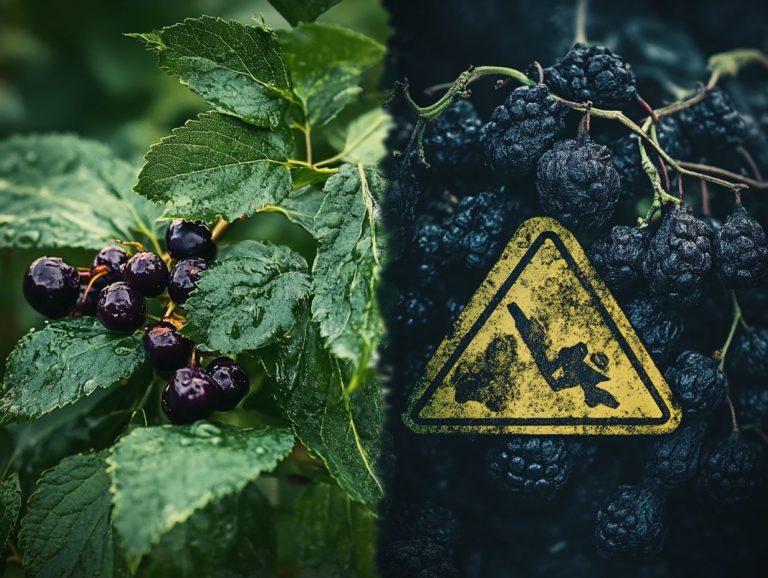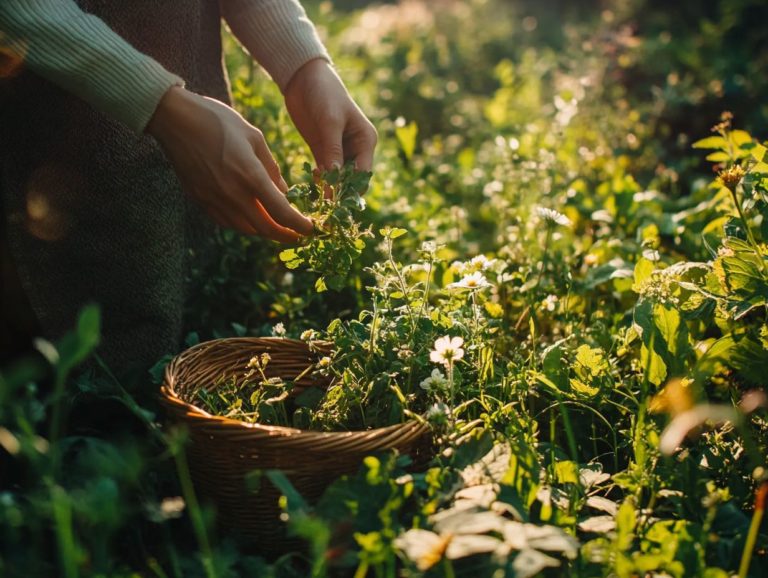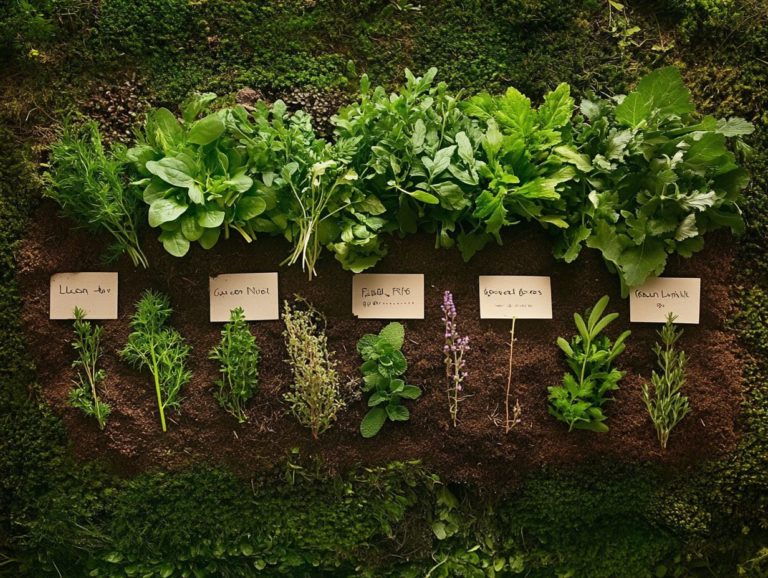What Are the Benefits of Wild Foraging?
Wild foraging is a delightful and rewarding way for you to connect with nature while uncovering the hidden treasures of wild foods in your local landscape.
It s not merely about discovering edible plants and mushrooms; this practice brings many benefits, from enhancing your nutrition to offering environmental advantages and saving you money.
This exploration delves into these perks, guides you on how to safely forage for wild plants, and shares innovative recipes for creative cooking to help you transform your wild finds into delectable meals. Are you ready to discover nature s hidden treasures?
Contents
Key Takeaways:

- Wild foraging provides a free and sustainable source of foods full of vitamins and minerals, including plants and mushrooms.
- Foraging for wild foods benefits the environment by reducing food waste and promoting biodiversity.
- By learning how to safely and ethically forage, individuals can save money and incorporate unique and delicious ingredients into their cooking.
What is Wild Foraging?
Wild foraging is your ticket to a treasure trove of wild foods, encompassing a delightful array of edible plants, mushrooms, herbs, and berries just waiting to be discovered in their natural habitats. This age-old practice has deep cultural roots, particularly in Italian culture, where foraged ingredients like mushrooms have long played a starring role in imaginative cooking and the crafting of traditional medicines.
Beyond mere cooking, wild foraging cultivates a profound connection with nature, allowing you to appreciate the nutritional content and wonders of wild foods that surround you.
Dating back thousands of years, foraging has served not only as a means of sustenance but also as a cherished cultural bonding experience. In Italy, regions like Tuscany and Umbria come alive with seasonal foraging festivals, where the community unites to gather wild asparagus, wild fennel, and popular mushrooms like porcini.
Understanding how to identify these plants is key; after all, not every wild food is safe for consumption. Mastering techniques like noticing details and recognizing smells can significantly boost your foraging success. By incorporating a variety of wild foods into your diet, you gain access to heightened flavor profiles, enriched nutrient content, and the rewarding practice of sustainable eating that honors local ecosystems.
Benefits of Wild Foraging
The benefits of wild foraging go far beyond simply gathering food; they offer substantial health advantages, contribute to environmental sustainability, and foster a deeper connection to local ecosystems. To learn more about these advantages, check out the benefits of sustainable foraging that enhance your wellbeing and culinary adventures with foraged food.
By engaging in foraging, you gain access to a rich variety of foraged foods that are often more nutritious than their cultivated counterparts. This not only promotes better health but also cultivates a genuine appreciation for seasonal and local food sources.
Nutritional Benefits
The nutritional benefits of foraged foods are truly remarkable, often surpassing those of conventional organic food and providing unique health benefits. By incorporating these wild delights into your diet, you’re not just adding flavor; you’re enriching your meals with higher levels of vitamins, minerals, and antioxidants.
Take wild plants like dandelion greens or mushrooms such as morels, for instance they’re brimming with essential nutrients that can help combat various health issues and diseases associated with poor nutrition. Dandelion greens are leafy plants that grow in many areas and are known for their health benefits.
These wild edibles shine not only in taste but also in their impressive nutrient profiles, offering vitamins A, C, and K, along with crucial minerals like iron and calcium, showcasing their role in the benefits of foraging. Dandelion greens, in particular, are celebrated for their detoxifying properties, which can support liver health and may even lower the risk of chronic conditions like heart disease. Meanwhile, foraged mushrooms deliver a generous dose of B vitamins that bolster your energy metabolism and immune function.
Integrating these nutrient-dense foods into your meals can significantly enhance your overall wellbeing, promote vitality, and shield you from nutritional deficiencies often associated with various ailments. Embrace the bounty of nature, and elevate your health with the treasures it offers. Start your foraging adventure today and experience the joys of nature s bounty!
Environmental Benefits
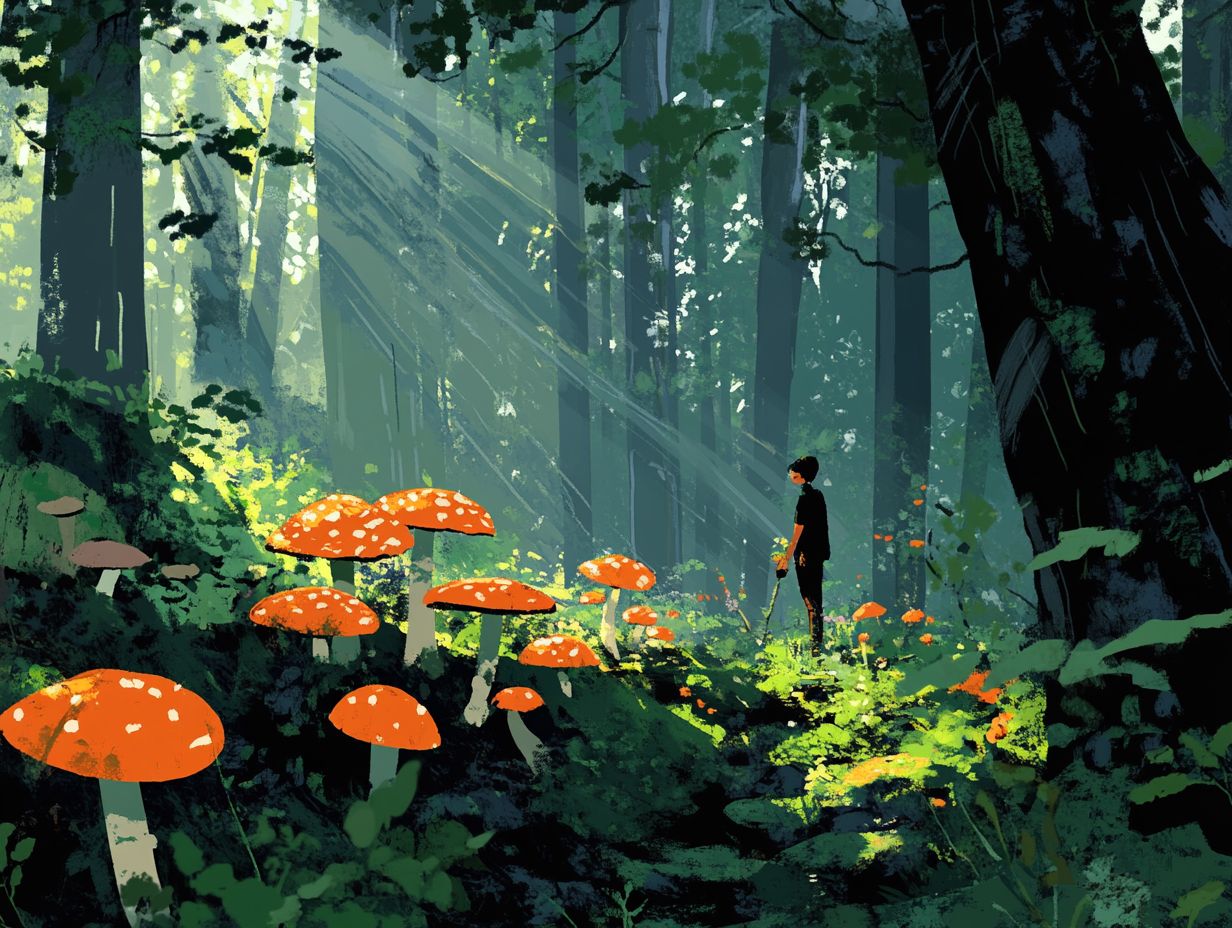
Wild foraging plays a vital role in promoting environmental sustainability by encouraging you to consume food from nearby areas and fostering a deeper appreciation for biodiversity, which refers to the variety of plant and animal life in a particular habitat, through the harvesting of wild plants. By engaging in practices like urban foraging, you can reduce your carbon footprint while supporting healthy ecosystems and developing a sense of stewardship towards the natural spaces around you. This benefits both the environment and community health.
Foraging nurtures your bond with nature. It also highlights why sustainable harvesting is essential, ensuring that local flora can thrive despite human interaction. In urban settings, foraging offers a powerful opportunity to reclaim neglected green spaces, transforming them into vibrant habitats for wildlife while enriching community ties.
By fostering respect for diverse plant species through sustainable foraging, you support local biodiversity, allowing both flora and fauna to flourish.
Taking a mindful approach to sustainable foraging gives you the power to contribute positively to your ecosystems, enhancing overall ecological health and community resilience, all while savoring the delightful, homegrown flavors nature has to offer.
Cost Savings
Imagine saving money while enjoying delicious free food wild foraging makes this possible! One of the most enticing benefits of wild foraging is the substantial cost savings it provides. Foraged foods offer a delightful source of free nourishment, enabling you to trim those grocery bills while savoring fresh and nutritious ingredients. By weaving foraging into your lifestyle, you ll uncover a wealth of local food options that not only cater to your dietary preferences but also spark your culinary creativity.
Engaging in the practice of foraging cultivates a sense of community and fosters the sharing of knowledge among enthusiasts. As you exchange tips on identifying edible plants, you ll find yourself bonding over shared experiences and discoveries, forming a supportive network in the process.
To embark on your foraging journey without breaking the bank, start by researching local edible plants through books or online resources, joining foraging groups, and practicing seasonal foraging in safe, accessible areas. Always keep in mind the importance of foraging sustainably and with permission, ensuring that you respect nature while reaping its economic rewards.
How to Safely Forage for Wild Foods
To embark on a successful foraging adventure, you must first grasp the essentials of safely sourcing wild foods. This involves accurately identifying edible plants and mushrooms, as well as adhering to foraging ethics, which means respecting nature by only picking what you need, and safety guidelines to ensure a truly rewarding experience.
Proper identification is crucial; some plants may be toxic, and having a trustworthy foraging guide at your side, like those from organizations such as Creative Edge Travel and New World Truffieres, significantly enhances your chances of a safe harvest while deepening your understanding of the local flora.
Identifying Edible Plants and Mushrooms
Identifying edible plants and mushrooms demands your keen observation and knowledge, as many wild plants, like morels, come with look-alikes that can be toxic if consumed, highlighting the importance of a solid foraging guide. By utilizing a well-researched foraging guide and participating in local foraging workshops, you can significantly enhance your ability to accurately identify safe and nutritious wild foods in your area, including plants, mushrooms, herbs, and berries.
To effectively distinguish between edible and non-edible species, you should pay close attention to visual characteristics such as leaf shape, flower color, and spore print, which can vary dramatically among similar species. Considering the habitat whether a plant flourishes in shady woodlands or open fields provides essential clues. Seasonal availability is also vital; for instance, ramps are best foraged in early spring, while chanterelles peak in midsummer.
By familiarizing yourself with common plants like dandelions and stinging nettles, as well as mushrooms such as puffballs and chicken of the woods, you can build confidence and increase your harvest of delicious wild edibles. With the right knowledge and practice, foraging can become a rewarding adventure.
Foraging Ethics and Safety Tips
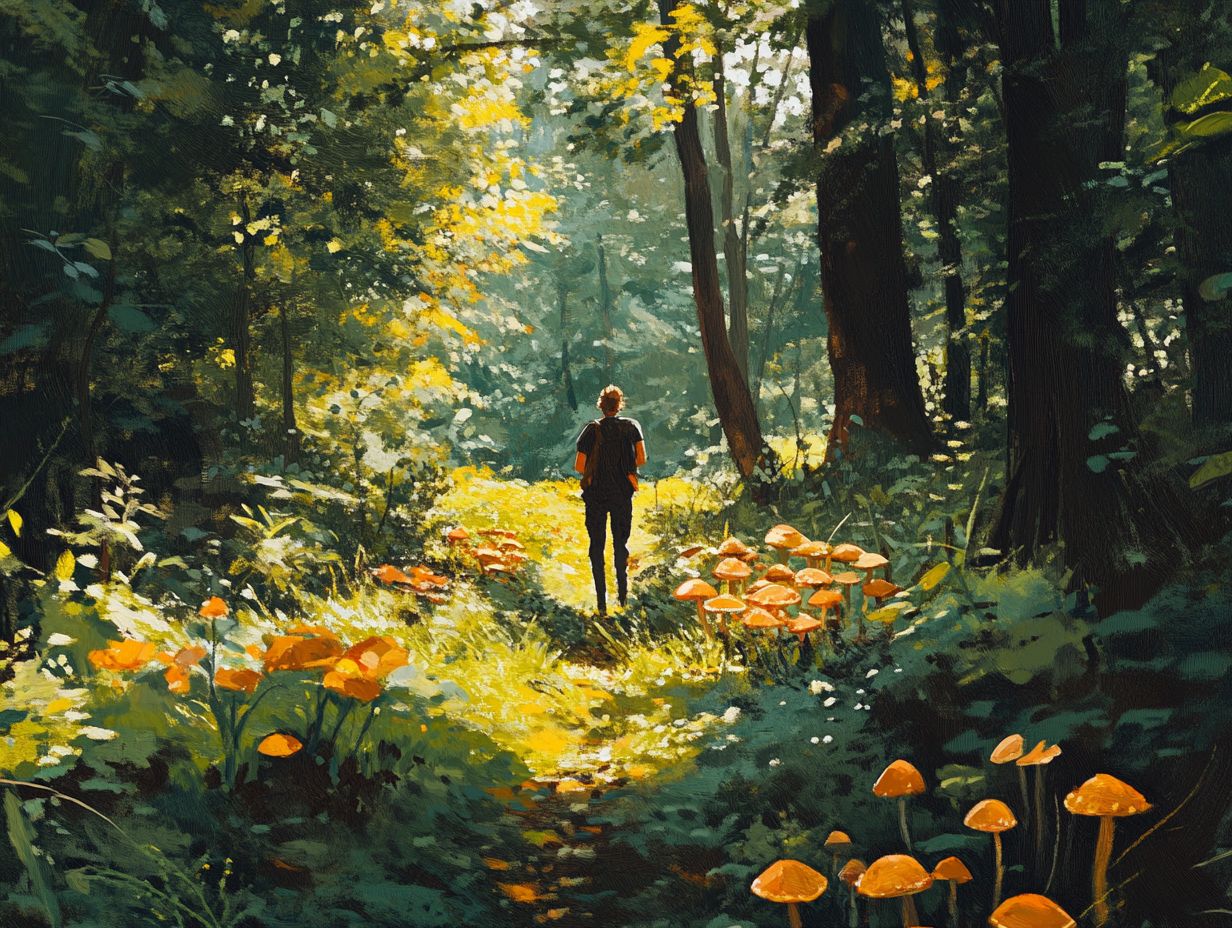
Practicing foraging ethics is essential for ensuring the sustainability of wild food sources and maintaining a healthy ecosystem. This includes respecting local regulations and the environment. Employ responsible harvesting techniques and adhere to safety tips, particularly when sourcing wild foods, to protect both your health and the environment.
As a forager, always leave enough plants for wildlife and future growth. This fosters a balanced relationship with nature. This mindful approach preserves local ecosystems and elevates your foraging experience. Aim to harvest no more than 10-20% of any given plant population, allowing sufficient time for regeneration and supporting the long-term availability of wild foods.
Respecting private property is paramount; always seek permission before foraging on someone else’s land. To ensure your safety, familiarize yourself with local regulations regarding foraging, recognize potentially toxic plants, and steer clear of areas that may be contaminated by pollutants. By prioritizing these guidelines, you cultivate a respectful interaction with nature and actively support the sustainability of wild food sources.
Recipes and Tips for Using Wild Foraged Foods
Creative cooking with wild foraged foods unveils a realm of culinary possibilities. The distinctive flavors and textures of ingredients like wild herbs and mushrooms can elevate your traditional recipes and spark entirely new creations.
By diving into seasonal foraging, you enrich your meals with fresh, nutritious wild foods, enhancing both their taste and health benefits.
Creative and Delicious Ways to Use Foraged Foods
There are countless creative and delightful ways to incorporate foraged foods into your culinary repertoire. From wild mushrooms and herbs enriching gourmet dishes to crafting distinctive herbal liquors that celebrate nature’s flavors, experimenting with these ingredients not only elevates your cooking but also deepens your appreciation for the natural world around you.
Imagine crafting a sumptuous wild mushroom risotto where foraged chanterelles blend seamlessly with creamy arborio rice, imparting an earthy richness that’s simply unmatched. Or picture a refreshing salad featuring dandelion greens, adorned with vibrant wildflower petals and drizzled with a honey-infused vinaigrette this dish will wow your guests with its stunning colors and vibrant flavors.
If beverages are more your style, consider infusing gin with foraged elderflowers to create a fragrant cocktail that bursts with seasonal character. By integrating these wild treasures into your everyday cooking, you unlock a world of flavors while fostering a deeper connection to your surroundings.
Frequently Asked Questions
What are the benefits of wild foraging?
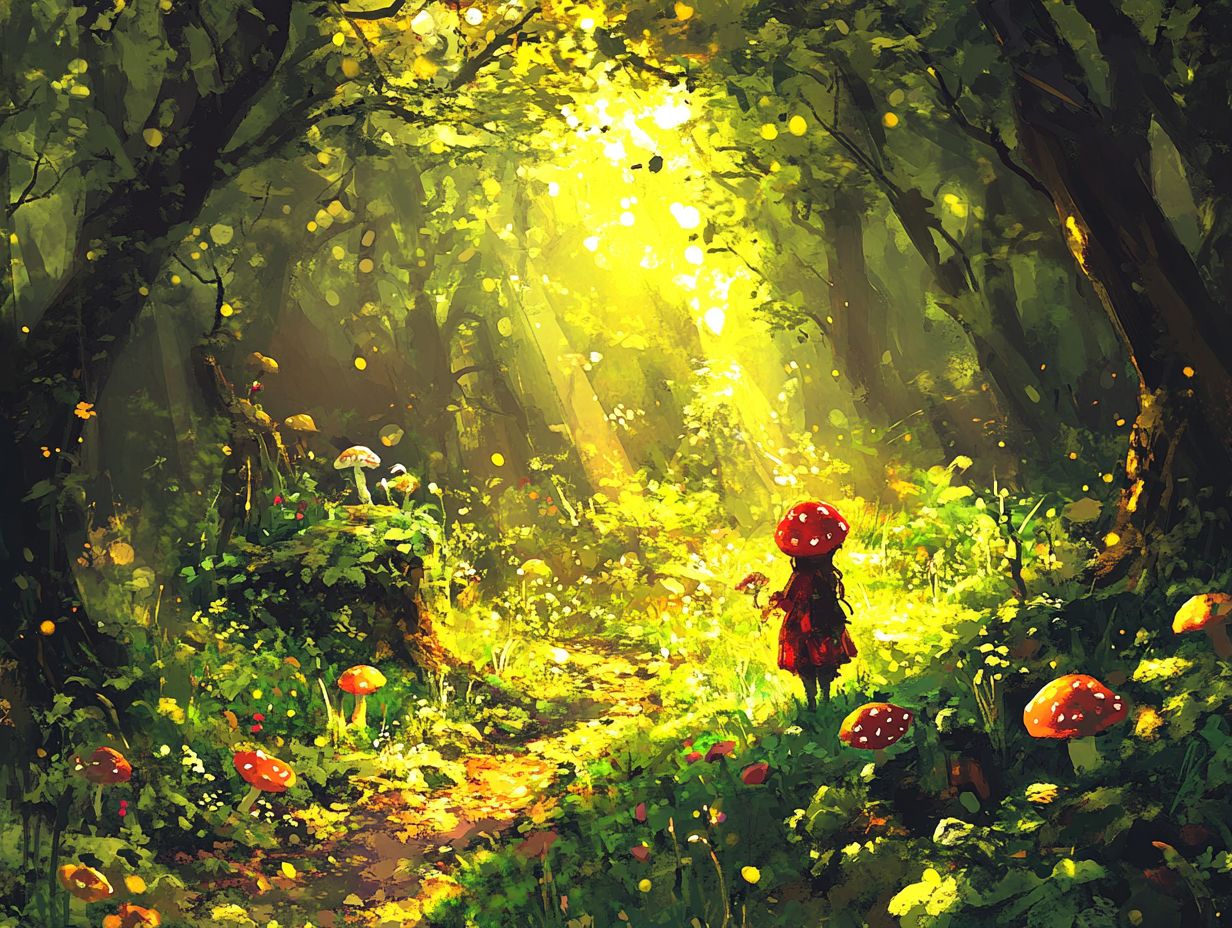
Wild foraging is the practice of harvesting wild plants, fruits, and herbs for human consumption. It has numerous benefits, including understanding the health benefits of wild edibles.
- Access to fresh, organic ingredients.
- Encouragement of outdoor activity.
- Connection to nature.
What nutritional benefits can be gained from wild foraging?
Wild foraged foods are often richer in nutrients than commercially grown produce. They are typically free from pesticides and other chemicals, making them a healthier option for consumption.
How does wild foraging promote sustainability?
Wild foraging promotes sustainability by reducing reliance on factory-farmed and commercially grown foods. It also helps preserve the natural environment by encouraging the growth of wild plants and reducing food waste.
Can wild foraging save money?
Yes, wild foraging can save money as the food is free and readily available in nature. It eliminates the need to purchase expensive organic produce and can be a great way to supplement meals with nutritious, free ingredients.
What mental and physical health benefits can be gained from wild foraging?
Wild foraging is a great form of exercise as it often involves hiking and exploring in nature. It can also be a therapeutic activity that promotes mindfulness and reduces stress and anxiety.
Are There Risks with Gathering Wild Plants?
Gathering wild plants can be exciting! However, it s essential to identify each plant correctly.
Some plants are poisonous, making it crucial to do your research. Consulting with an expert before you start is always a wise choice.

